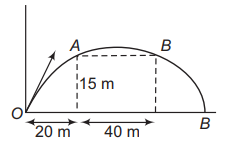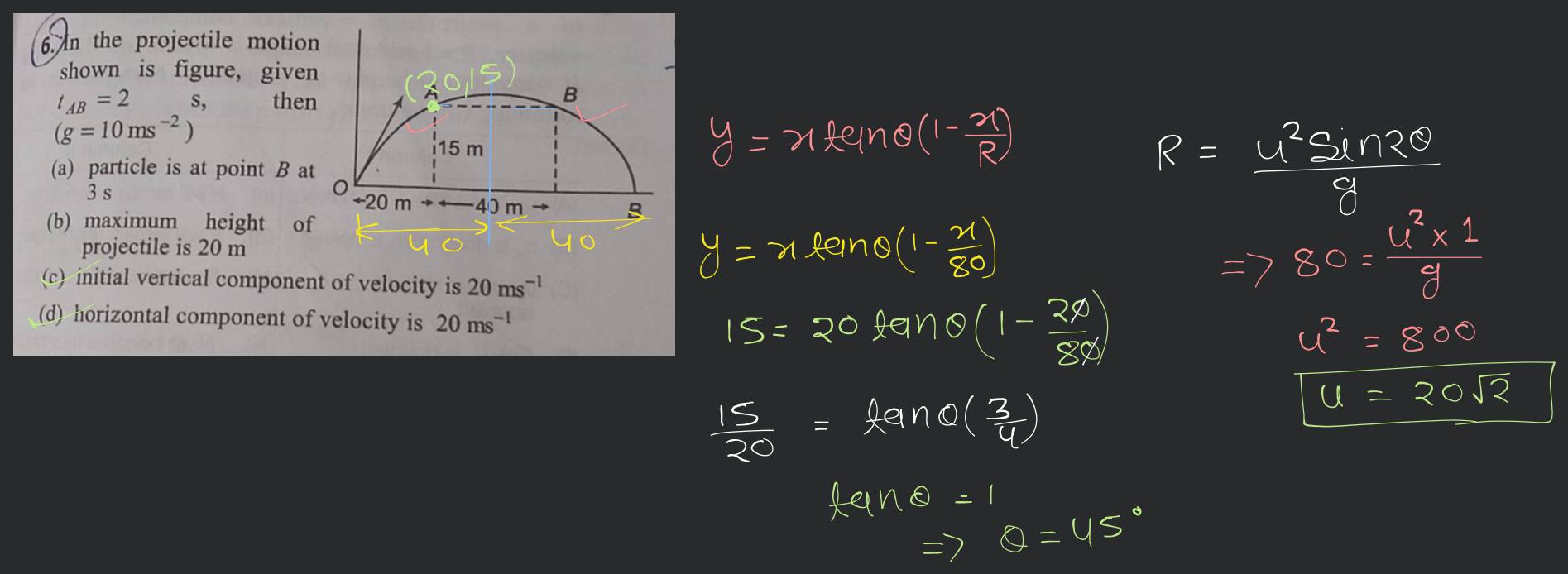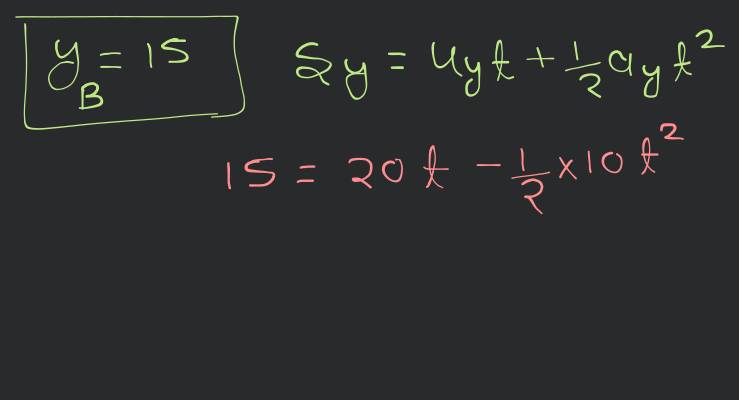Question
Hard
Solving time: 4 mins
In the projectile motion shown is figure, given then

Found 7 tutors discussing this question
Discuss this question LIVE
14 mins ago
 Text solution
Text solution Verified
Verified
Solution(all)
Horizontal component of velocity remains unchanged
For projectile
Maximum height of total projectile,
For complete projectile
Horizontal component of velocity remains unchanged
For projectile
Maximum height of total projectile,
For complete projectile
Was this solution helpful?
147
Share
Report

One destination to cover all your homework and assignment needs
Learn Practice Revision Succeed

Instant 1:1 help, 24x7
60, 000+ Expert tutors

Textbook solutions
Big idea maths, McGraw-Hill Education etc

Essay review
Get expert feedback on your essay

Schedule classes
High dosage tutoring from Dedicated 3 experts
Practice questions from Mechanics Volume 1 (DC Pandey)
Question 1
Easy
Views: 5,914
Question 2
Medium
Views: 6,164
Question 4
Medium
Views: 5,718
Practice more questions from Motion in a Plane
Question 1
Medium
Views: 5,115
Question 2
Easy
Views: 5,472
Question 3
Medium
Views: 5,607
Question 4
Views: 6,001
Practice questions on similar concepts asked by Filo students
Question 1
Views: 5,860
Question 2
Views: 5,209
Question 3
Views: 5,854


Stuck on the question or explanation?
Connect with our Physics tutors online and get step by step solution of this question.
231 students are taking LIVE classes
| Question Text | In the projectile motion shown is figure, given then |
| Updated On | Sep 1, 2023 |
| Topic | Motion in a Plane |
| Subject | Physics |
| Class | Class 11 |
| Answer Type | Text solution:1 Video solution: 1 |
| Upvotes | 206 |
| Avg. Video Duration | 10 min |






